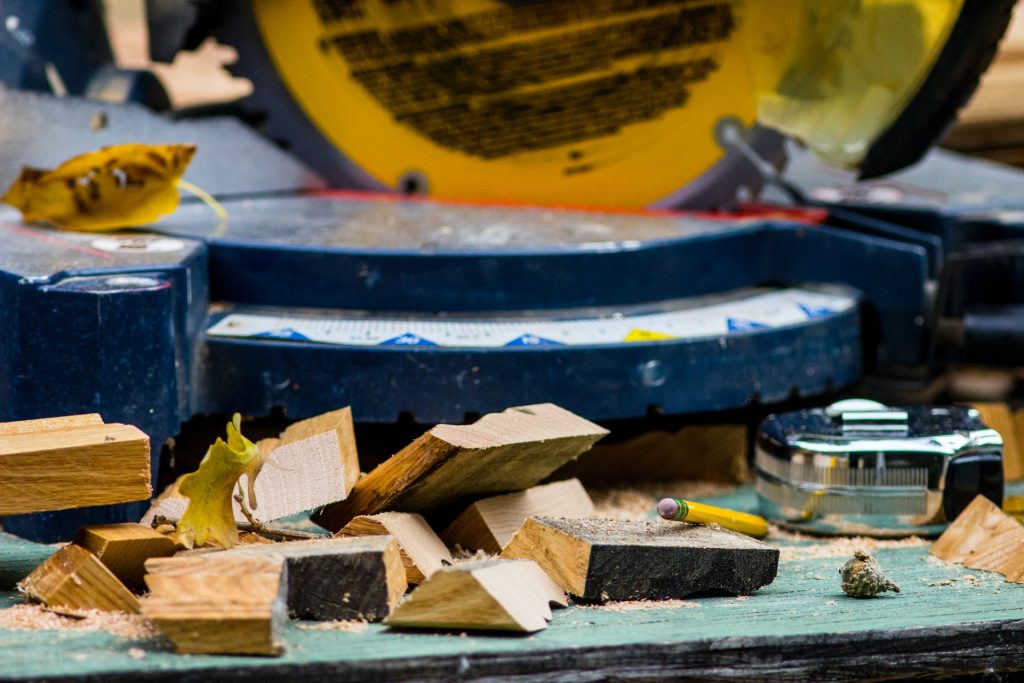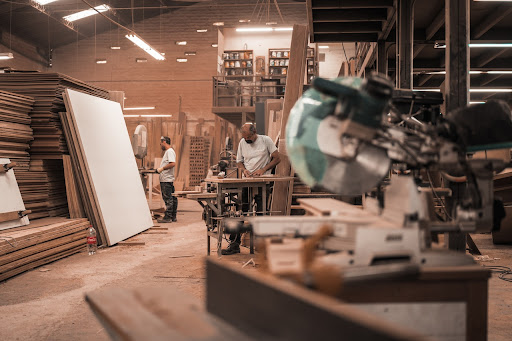Of course, when you start to work with potentially dangerous power tools, safety should be your first priority.
One thing that goes hand-in-hand with safety is proper maintenance and storage. That’s because if you slack with these aspects, your tool can become unsafe as well.
Quick Summary
In this post, we will provide some basic tips and tricks you should be aware of when it comes to the storage and maintenance of your circular saw.
These tips will help you increase the longevity of your circular saw.
So without further ado, let’s get into it.
Maintaining Your Circular Saw

As mentioned above, there are a number of things you can do to maintain your circular saw.
The number one thing that pops up into most people’s heads when we mention “maintenance” is cleaning. We made a post about how you can effectively clean the blade of your circular saw that you can check out.
If you don’t clean the circular saw’s blade, the gunk buildup can cause tearout during cutting. Not only that but it also puts a lot of unneeded stress on your saw’s motor.
Here are some other things you must know about circular saw maintenance in addition to cleaning:
Utilizing the Appropriate Saw Blades
If you head down to your local hardware store or browse online, you will find a wide variety of circular saw blades available.
That being said, not all circular saw blades will be appropriate for your particular saw and the tasks you want to use it for.
First of all, you need to think about the size of the circular saw you have and whether you’re buying the right-sized blade for it.
After that, you also need to consider the tooth count, tooth design, blade material as well as the type of material that the blade is designed to cut through.
Naturally, if you choose a blade that is not appropriate for your circular saw, it can cause damage to the saw itself as well.
Using the wrong blade for the job you are doing will cause your circular saw to work overtime. This can overload it and ultimately, cause damage to it.
Storing Your Circular Saw
Circular saws are extremely tough tools that are designed to withstand tough outdoor conditions.
That being said, you shouldn’t overly expose them to such conditions if you can help it. For example, if your circular saw came with a case, you should use it whenever the circular saw itself is not in use.
If it didn’t come with a case, then you need to find a cool and dry place for your circular saw where you can put it when you’re not using it.
In addition to the storage of the circular saw, you also need to think about where you should store its blades.
You should never leave your circular saw blades lying at the bottom of your bag or somewhere around your workstation.
Sharp blades lying around is definitely a recipe for disaster. Not only can you accidentally hurt yourself but it’s also not good for the blades to be lying around exposed to the external environment.
Some circular saws have a spot where you can store extra blades when they’re not in use. If your circular saw has that, you can use it and then store the saw itself wherever you want to.
If your circular saw does not have that feature, then another great idea would be to hammer some nails near your workbench. Then, use these nails to hang the extra circular saw blades you have.
That way, whenever you need them for a task, you’ll have quick and easy access to them as they’ll be hanging right there in front of you.
Inspect Your Circular Saw Before You Use It
After you take your circular saw and its blade(s) out of storage to use on a job, make sure to inspect it thoroughly.
You should inspect your circular saw and its blade(s) every time you bring it out of storage for use.
Inspect the blade and its teeth first. Look for any chipping, any broken teeth or any teeth that may have been bent out of place. If you identify anything, make sure to fix all the problems you find before getting to work.
For the circular saw itself, inspect it for any loose screws that may come fully undone during use. Make sure to tighten any loose screws that you find before use.
If you have a corded circular saw, ensure that you inspect the cord thoroughly to make sure it’s in good shape and will not cause any electrical problems during operation.
Check the air vents to ensure they are clear and not blocked off by any type of debris, dust, etc. Also, check the blade guard to ensure that it’s working properly.
Lastly, check all of the knobs, levers, and buttons that your circular saw has to ensure it’s in the right mode and is set to your preferred settings.
You don’t want to turn the circular saw on thinking it’s going to go slow and it ends up going extremely fast. Having unexpected settings while turning your circular saw on can easily end up in injuries or accidents since you don’t expect it.
Hence, don’t set yourself up for any surprises like kickbacks.
Heat is the Enemy
We’ve already mentioned how you should store your circular saw and its blades in a cool and dry place.
That’s because heat can definitely warp the blades and reduce their overall effectiveness.
This is especially true during operation which is why we recommend that you take short breaks between jobs to let the blade and saw rest a bit.
This practice increases your circular saw and its blade’s longevity by a long shot.
In addition to that, during storage, you must keep an eye on the temperature where you store your blades. If the blades are quite thin, then high environmental temperatures can definitely cause some warping.
Wrapping Things Up…
We hope you found some value in this post and were able to find some neat ways to increase the longevity of your circular saw and its blades.
If you have some tips of your own to share with us or if you’d like to ask a question, please comment down below.
Visit our page for more information about circular saws.

